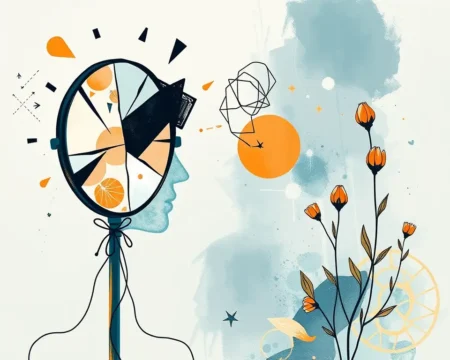A wave of nostalgia is sweeping through the self-help landscape, and it’s not for the latest life coach or motivational speaker. Instead, a forgotten gem from the 1990s, a yoga book, is proving to be more impactful than any modern self-help guru. The book’s enduring wisdom on mindfulness, physical well-being, and spiritual growth offers a refreshing alternative to the often-overcomplicated advice found in today’s self-help books. This isn’t just about bending into a pretzel; it’s a guide to inner peace that seems as relevant now as it did three decades ago.
The Enduring Appeal of ’90s Yoga
The 1990s were a pivotal time for the popularization of yoga in the West. Unlike today’s highly commercialized yoga scene, the focus then was on the practice’s holistic benefits. Yoga books from that era often emphasized the interconnectedness of mind, body, and spirit, a concept that is often lost in the pursuit of trendy fitness regimes. Many of these books stressed the importance of mindful movement, breath control, and meditation, and presented them as tools for genuine personal growth rather than just exercises for physical fitness.
Simple but Profound Techniques
The yoga techniques outlined in these books are often remarkably simple, yet profoundly effective. Instead of demanding complex poses, they focus on foundational asanas, and proper breathing techniques. This simplicity makes the practice accessible to everyone, regardless of their age or fitness level. The emphasis is on feeling the pose, on being present in the moment, which is a marked contrast to the performance-driven culture of many modern yoga studios.
A Focus on Inner Reflection
Unlike many self-help books that preach external achievement, these yoga guides emphasize inner reflection. They encourage individuals to look inward, to understand their emotions, and to cultivate a sense of inner calm. The practice of yoga becomes a pathway to self-discovery, allowing practitioners to identify and address their inner conflicts rather than focusing on external successes. The books are not offering quick fixes but tools for long-term self-improvement.
Why It Trumps Modern Self-Help
The modern self-help industry is a crowded marketplace filled with quick-fix solutions, and promises of overnight transformations. While some of these resources may provide valuable tips, they often lack the depth and holistic approach offered by ’90s yoga books.
Holistic vs. Fragmented Advice
Modern self-help often focuses on fragmented advice, addressing specific issues with individual solutions. In contrast, a ’90s yoga book views personal growth as an integrated process, emphasizing the interconnectedness of physical, mental, and spiritual well-being. This approach creates a sustainable and balanced path to self-improvement instead of relying on temporary fixes.
Less Hype, More Substance
The ’90s yoga books generally do not employ the hyperbolic language and exaggerated claims that are so common in today’s self-help literature. They simply present the practice of yoga as a tool for self-improvement. The focus is on the user’s effort and their progress rather than any sensational promise of instantaneous transformation. This grounded approach is part of the reason why these guides continue to resonate.
The Authenticity Factor
There is an undeniable authenticity to the wisdom found within these older yoga books. Written by practitioners who have spent years, and sometimes decades, exploring the practice, they offer guidance based on experience rather than theoretical concepts. This authenticity fosters a sense of trust and connection that is often lacking in more commercialized self-help materials. The absence of marketing jargon makes the information in these books feel very genuine.
Integrating the ’90s Yoga Approach into Modern Life
It’s not necessary to abandon modern self-help entirely; however, integrating the principles of ‘90s yoga practice can enhance your approach to personal growth.
Mindfulness in Daily Activities
The focus on mindfulness, which is a core tenet of ’90s yoga, can be applied to daily life. Whether doing chores or working on a project, being present in the moment can significantly reduce stress and enhance overall well-being. The key is to engage with all the senses. Feel the texture of the clothes you are folding, the smell of the coffee you are brewing, and the sounds around you. This kind of present moment awareness can be a potent antidote to today’s hectic lifestyles.
Slow and Steady Wins the Race
Many self-help strategies promote dramatic change over a short amount of time. But, the ’90s yoga ethos emphasizes a slower, more deliberate approach. Taking the time to build a solid foundation, whether in yoga practice or any other area of life, is more sustainable. This approach allows individuals to make real, lasting progress rather than relying on temporary boosts that fade with time.
Focus on Inner Peace
The ’90s yoga books are a reminder that true self-improvement comes from within. The aim is not about changing external circumstances but creating a sense of inner peace. When you feel at peace with yourself, you can approach life’s challenges with more equanimity. This inward focus is especially relevant in a world that constantly pushes us to seek happiness through external validation.
A Timeless Path to Wellbeing
These ’90s yoga books aren’t just about fitness, they are about the total well-being of the individual, mind, body, and spirit. Their emphasis on inner reflection, mindful movement, and the interconnectedness of all things offers a powerful counterpoint to the often-superficial solutions proposed by modern self-help materials. As we navigate an increasingly complex world, revisiting these older guides can provide a simpler and more authentic path towards personal growth and lasting inner peace. The wisdom found in these books has proven to be timeless, and offers a perspective that is just as valuable today as it was in the past.
Reconnecting with Ourselves
In a world of ever-changing trends and fast-paced technological advancements, the simplicity and depth of these books offer a welcome return to core principles. The focus is on reconnecting with oneself, which is an effort that is always rewarding. By combining a ‘90s yoga approach with modern knowledge, a person can achieve balance, peace, and joy in their life.
The Future of Self-Help
Perhaps the most important lesson from this rediscovery of ‘90s yoga books is that self-help isn’t about chasing the latest trends. It is about finding a path that resonates with an individual’s inner truth. In an age where information is widely accessible, taking a look back might be the key to moving forward, and achieving the kind of peace we all long for. The simplicity of these ‘90s resources may seem outdated, but they continue to provide a framework for living a more balanced life.










